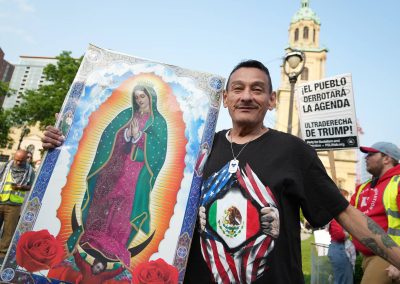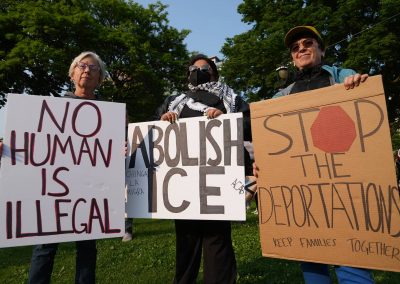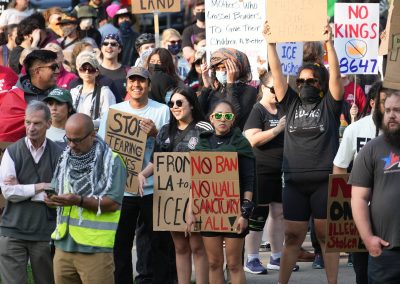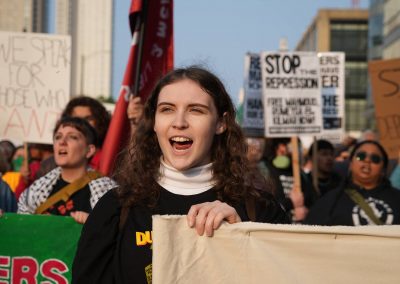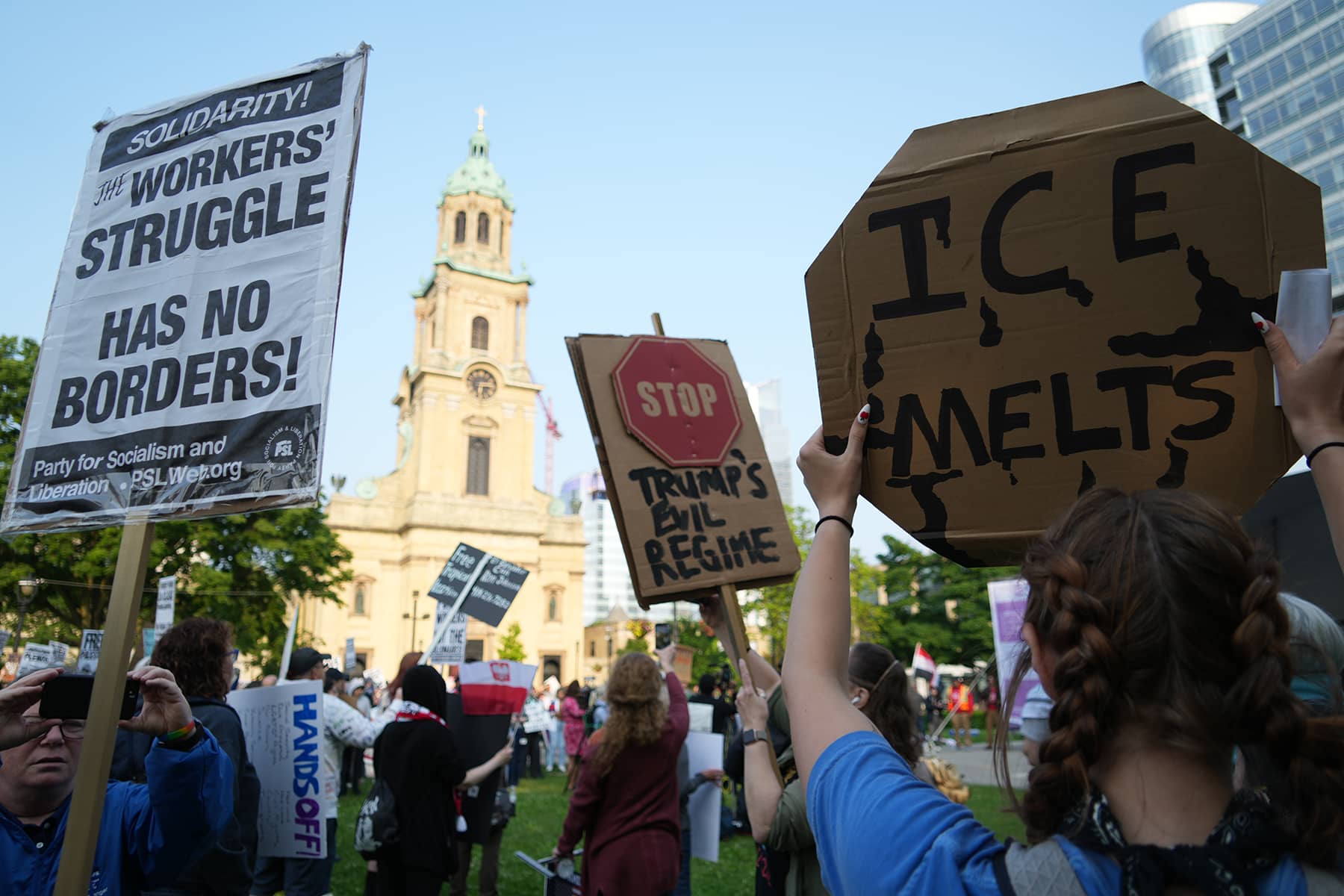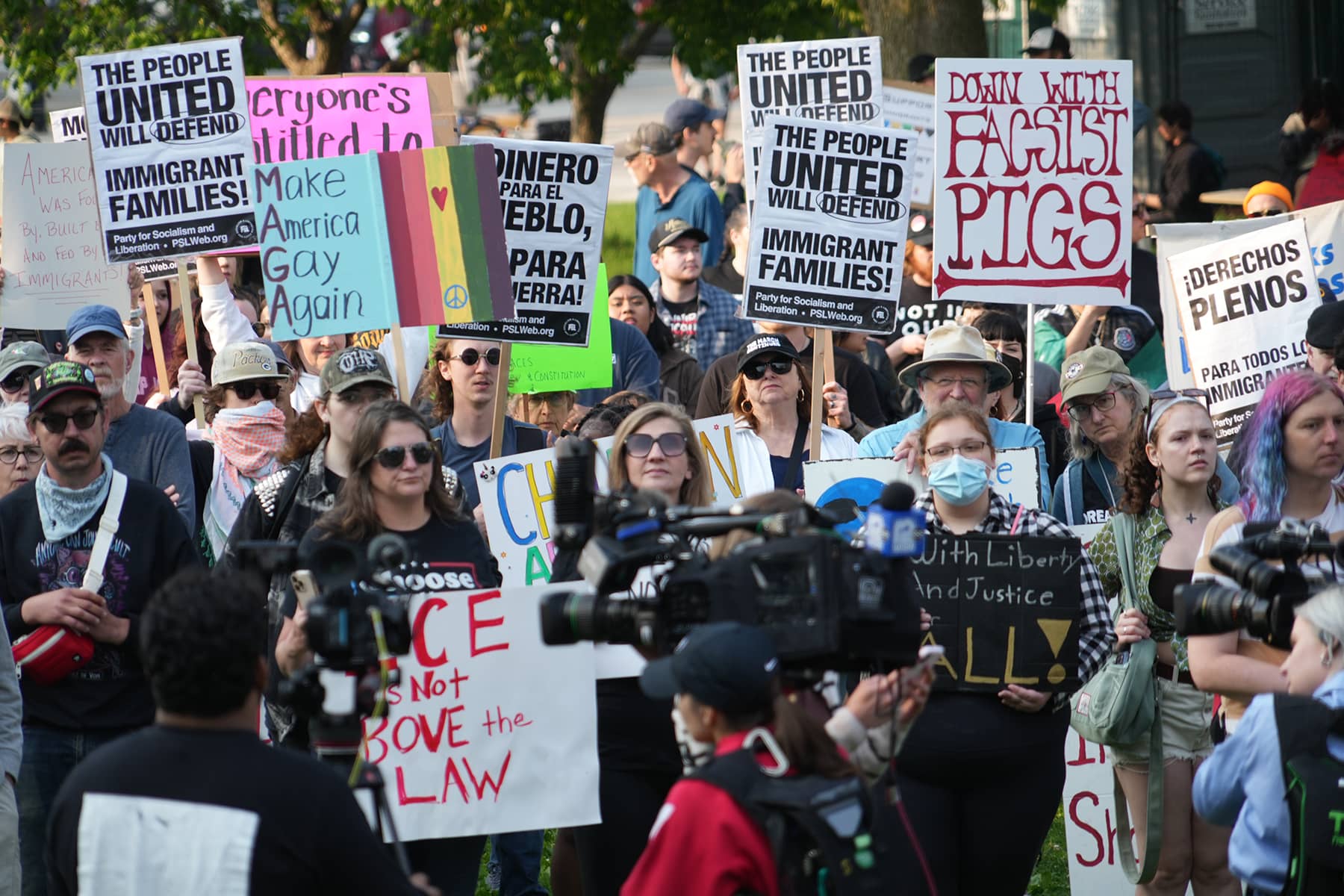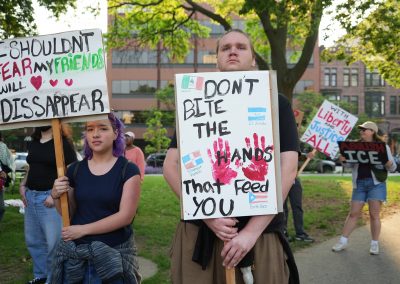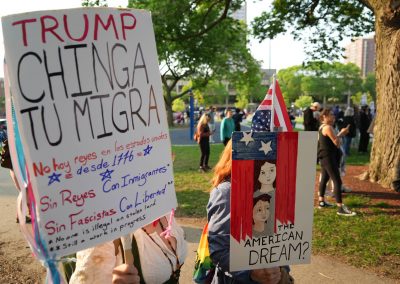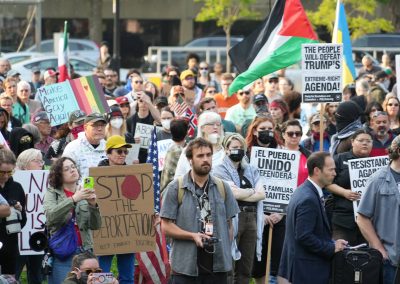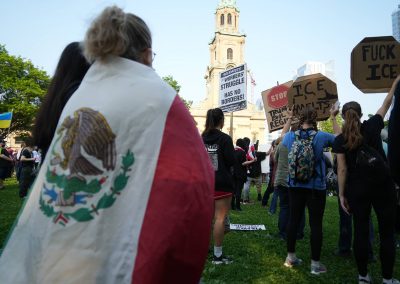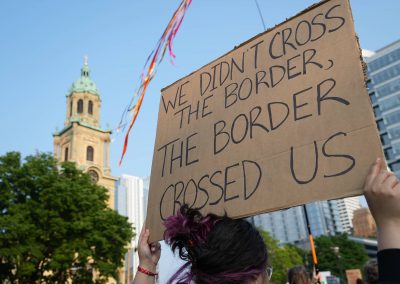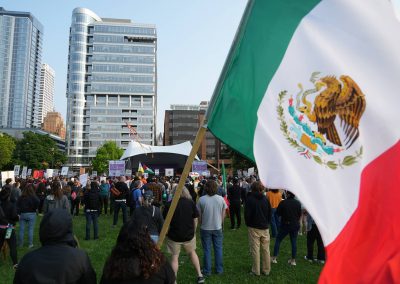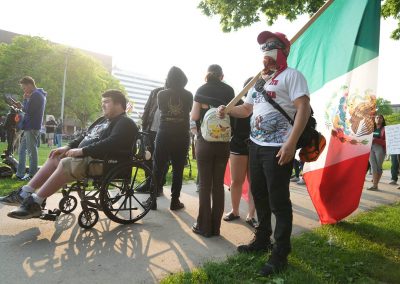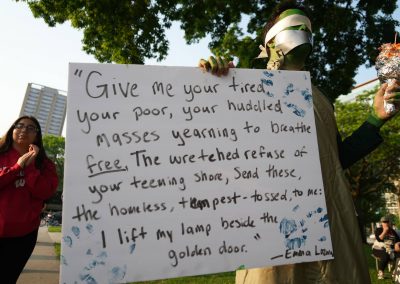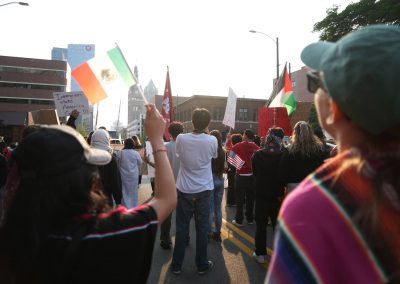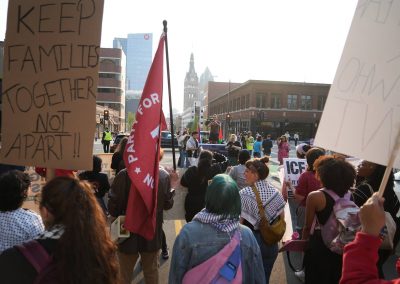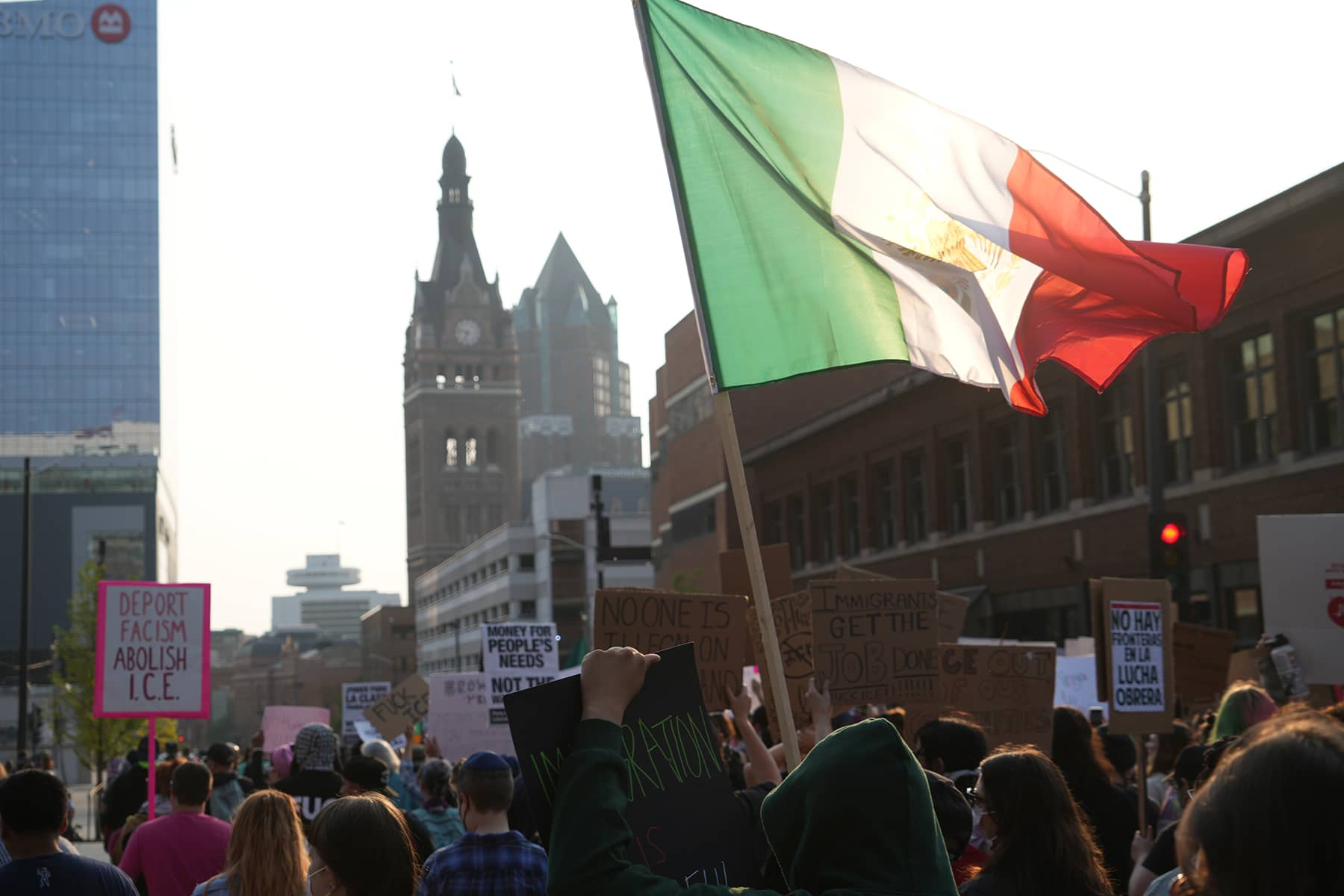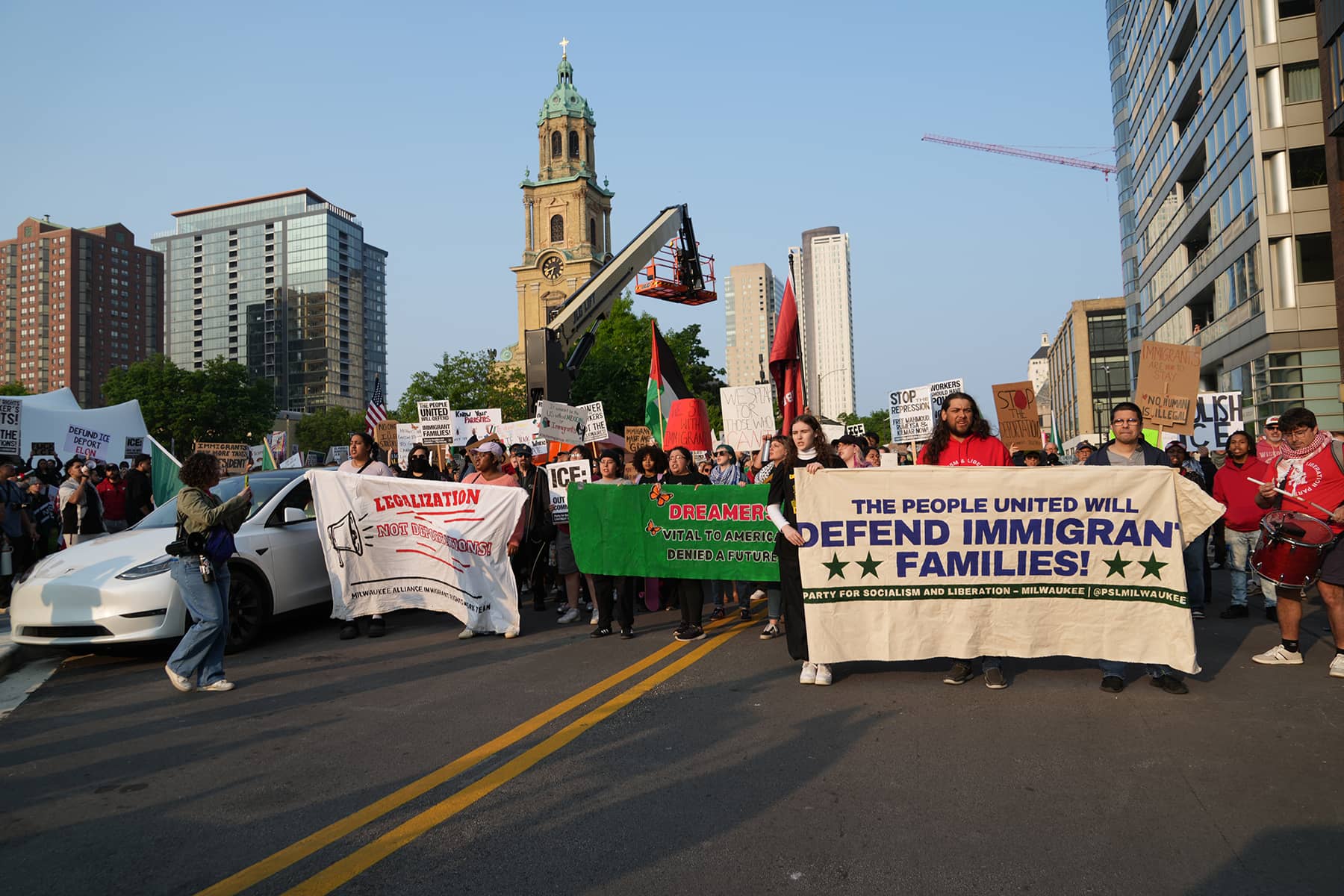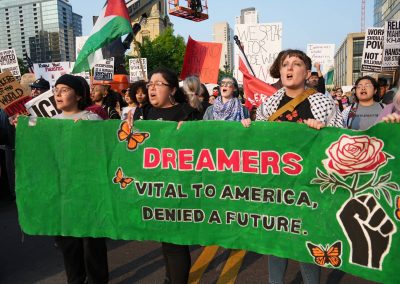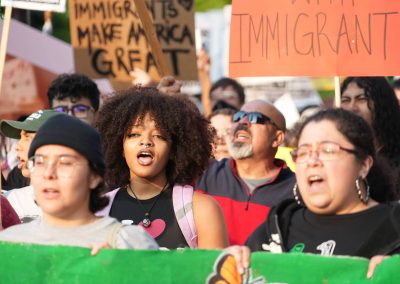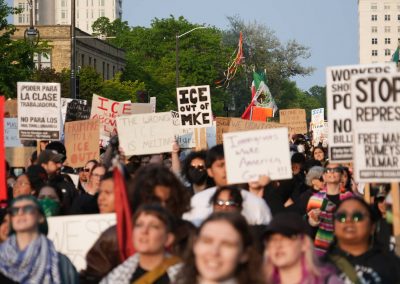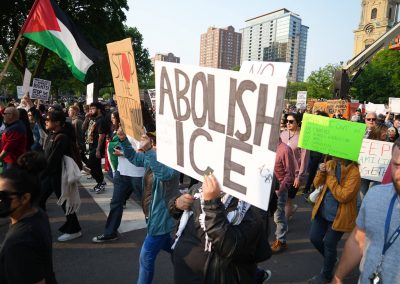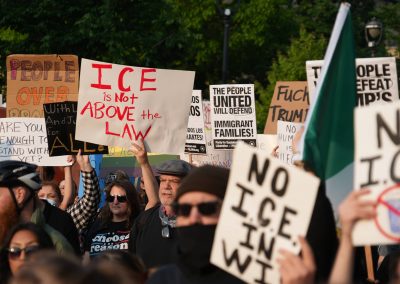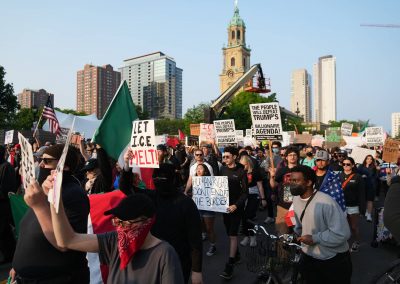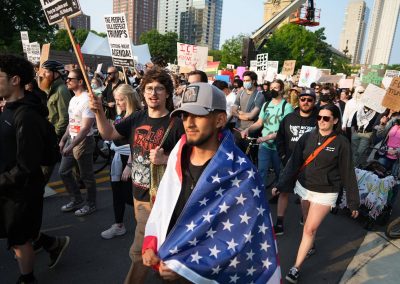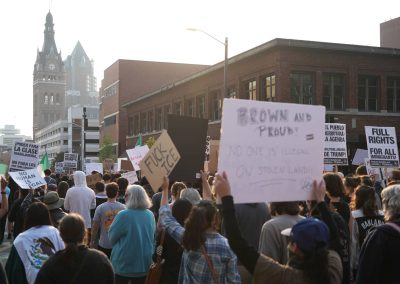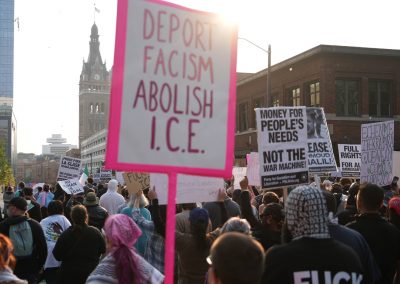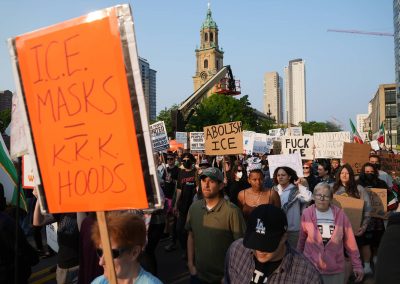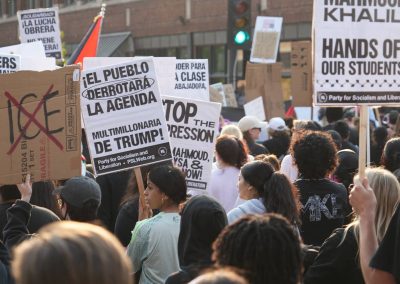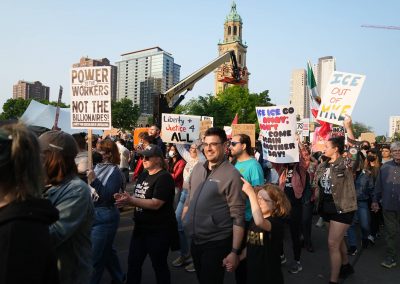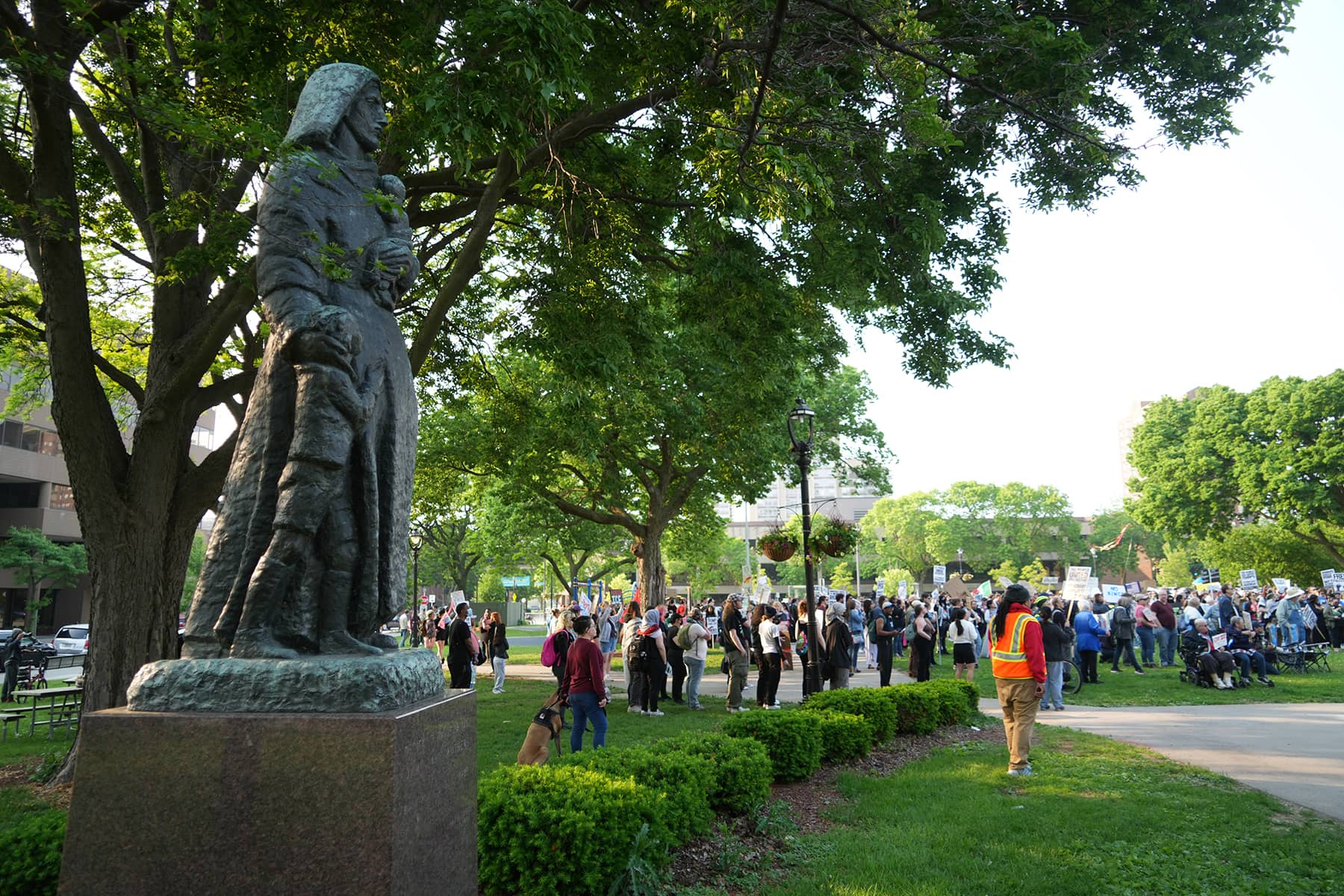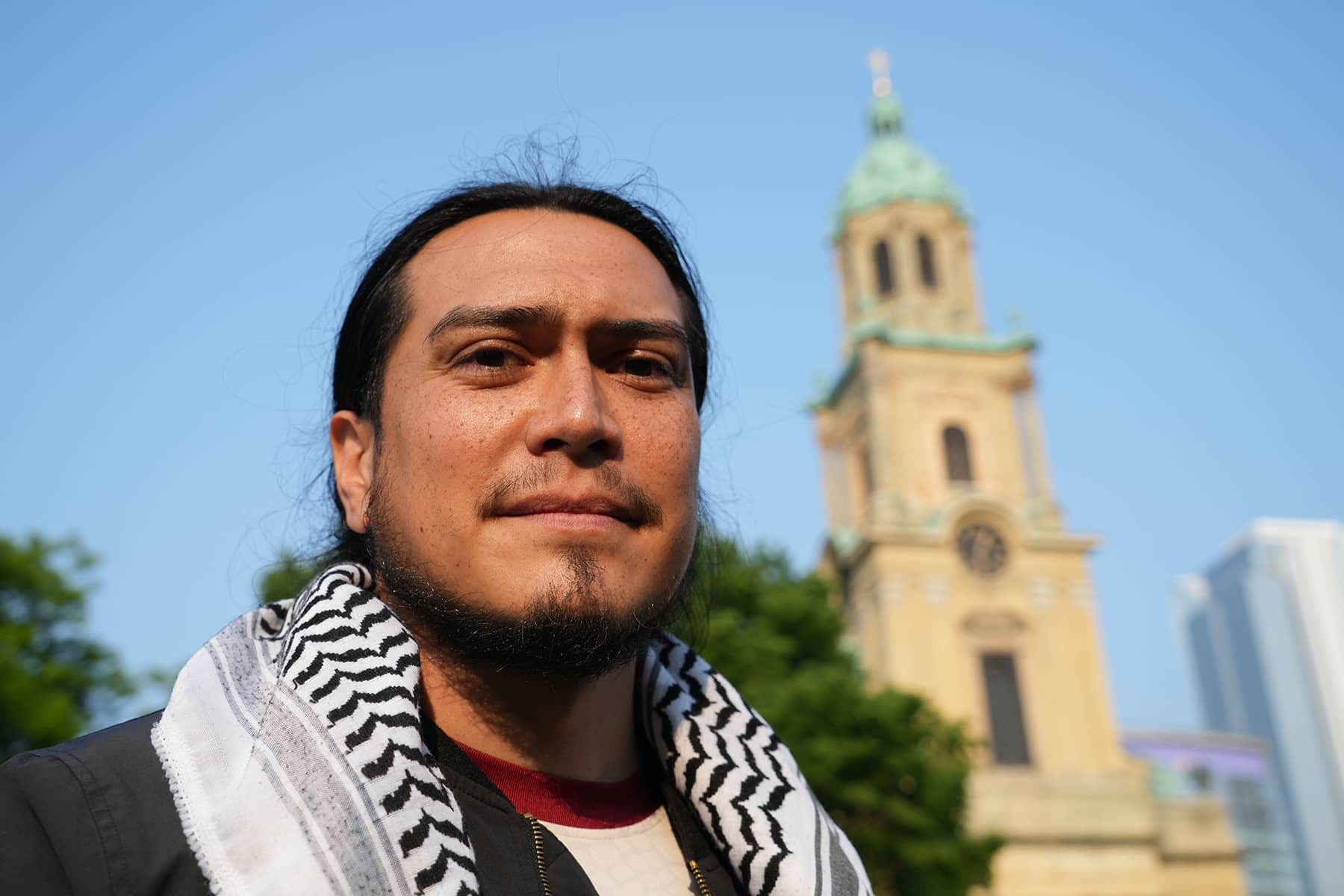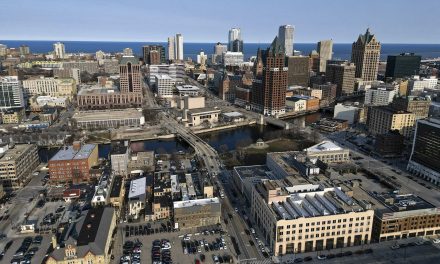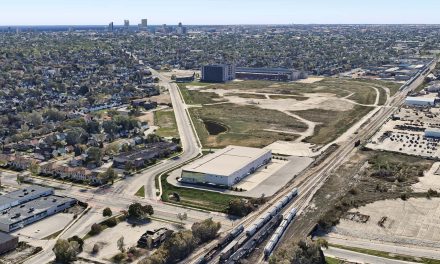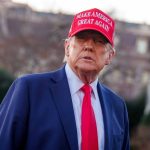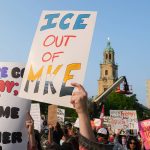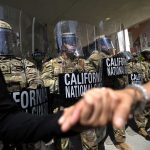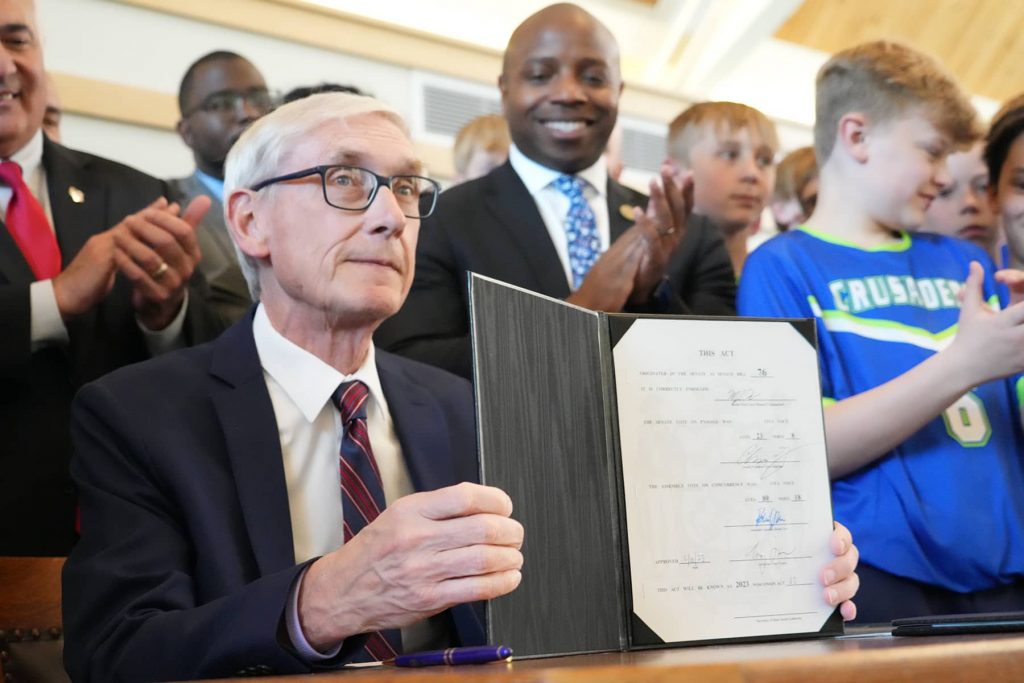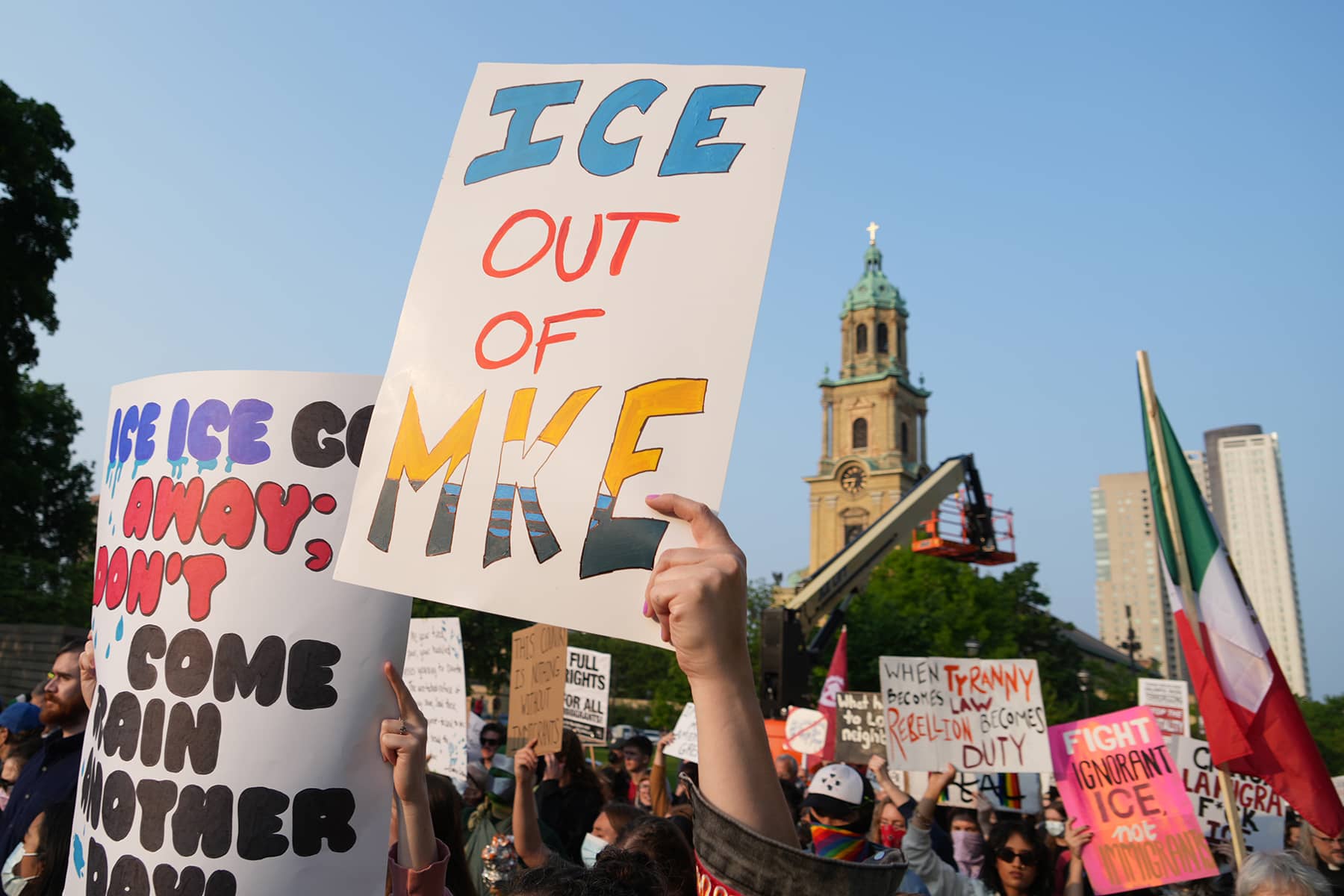
Donald Trump made no secret of his willingness to use maximalist tactics to enforce his biased interpretation of immigration laws as he campaigned in the 2024 election to stay out of jail. The fulfillment of that pledge to Americans is now on full display in Los Angeles.
The criminally convicted felon and occupant of the White House has put hundreds of National Guard troops on the streets to quell protests over his regime’s heavy-handed immigration raids, a deployment that state and city officials say has only inflamed tensions.
Trump called up the California National Guard over the objections of Democratic Governor Gavin Newsom, the first time in 60 years a president has done so, and is deploying active-duty U.S. troops to support the guard.
GUARD DEPLOYMENT IS AN UNPRECEDENTED ESCALATION
The deployment was the first time in decades that a state’s National Guard was activated without a request from its governor, a significant escalation against those who have sought to hinder the Trump regime’s mass deportation efforts.
The last time the National Guard was activated without a governor’s permission was in 1965, when President Lyndon B. Johnson sent troops to protect a Civil Rights march in Alabama, according to the Brennan Center for Justice.
In a directive on June 7, Trump invoked a legal provision allowing him to deploy federal service members when there is “a rebellion or danger of a rebellion against the authority of the Government of the United States.”
By overriding Governor Newsom, Trump is already going beyond what he did to respond to the Black Lives Matter protests in 2020. He warned that he could send troops to contain demonstrations that turned violent if governors in the states did not act to do so themselves. Trump said in September of that year that he “can’t call in the National Guard unless we’re requested by a governor” and that “we have to go by the laws.”
But now, the past and current president is moving swiftly, with little internal restraint, to test the bounds of his executive authority to deliver on his promise of mass deportations. What remains to be seen is whether Americans will stand by him once it is operationalized nationwide, as Trump looks to secure billions from Congress to dramatically expand the country’s detention and deportation operations. For now, Trump is betting that they will.
“If we didn’t do the job, that place would be burning down,” Trump falsely professed to reporters on June 9, speaking about California. “I feel we had no choice. … I don’t want to see what happened so many times in this country.”
A CRISIS OF TRUMP’S OWN MAKING
The original and peaceful protests began to unfold on June 6 as federal authorities arrested immigrants in several locations throughout the sprawling city, including in the fashion district of Los Angeles and at a Home Depot. The anger over the regime’s brutal actions quickly spread, with protests in Chicago and Boston, as demonstrations in the southern California city also continued.
By June 9, thousands flooded the streets around City Hall for a union rally ahead of a hearing for arrested labor leader David Huerta, who was freed a few hours later on a $50,000 bond. Huerta’s arrest on June 6 while protesting immigration raids has become a rallying cry for people angry over the administration’s crackdown. He is the president of the Service Employees International Union California, which represents thousands of the state’s janitors, security officers, and other workers.
Early protests had a calm and even joyful atmosphere at times, with people dancing to live music and buoyed by Huerta’s release. Protesters linked hands in front of a line of police officers outside the downtown federal detention center where Huerta was being held.
Religious leaders joined the protesters, working with organizers at times to de-escalate moments of tension. There was a heavy law enforcement presence in the few square blocks, while most in the immense city of some 4 million people went about their normal business on peaceful streets.
But Trump and other officials in his regime remained unbowed, capitalizing on the images of burning cars, graffiti, and Mexican flags, which, while not dominant, started to become the defining images of the unrest, to bolster their law-and-order cause.
Leaders in the country’s most populous state were similarly defiant. California officials sued the Trump administration on June 9, with the state’s attorney general, Rob Bonta, arguing that the deployment of troops “trampled” on the state’s sovereignty and pushing for a restraining order.
The initial deployment of 300 National Guard troops quickly expanded to the full 4,000 that had been authorized by Trump.
The state’s senior Democratic senator, Alex Padilla, said that “this is absolutely a crisis of Trump’s own making.”
“There are a lot of people who are passionate about speaking up for fundamental rights and respecting due process, but the deployment of National Guard only serves to escalate tensions and the situation,” Padilla said. “It’s exactly what Donald Trump wanted to do.”
Padilla slammed the deployment as “counterproductive” and said the Los Angeles Sheriff’s Department was not advised ahead of the federalization of the National Guard. His office has also pushed the Pentagon for a justification on the deployment, and “as far as we’re told, the Department of Defense isn’t sure what the mission is here,” Padilla added.
CANDIDATE TRUMP PREVIEWED HIS IMMIGRATION STRATEGY
Much of this was predictable. During his 2024 presidential campaign, Trump pledged to conduct the largest domestic deportation operation in American history to expel millions of immigrants in the country without legal status. He often praised President Dwight D. Eisenhower’s military-style immigration raids. As a candidate, Trump and his advisers suggested they would have broad power to deploy troops domestically to enact Trump’s far-reaching immigration and public safety goals.
His speedy deployment in California of troops against those whom he has alluded to as “insurrectionists” on social media is a sharp contrast to his decision to issue no order or formal request for National Guard troops during his MAGA insurrection at the U.S. Capitol on January 6, 2021, despite his repeated and false assertions that he had made such an offer.
Trump is now surrounded by officials who have no interest in constraining his power. In 2020, Trump’s then-Pentagon chief publicly rebuked Trump’s threat to send in troops using the Insurrection Act, an 1807 law that empowers the president to use the military within the U.S. and against American citizens.
Current Defense Secretary Pete Hegseth signaled support on his personal X account for deploying troops to California, writing, “The National Guard, and Marines if need be, stand with ICE,” referring to the U.S. Immigration and Customs Enforcement agency.
The Defense Department said on June 9 it was deploying about 700 active-duty Marines to Los Angeles to support National Guard troops already on the ground to respond to the protests.
During his Oval Office engagement with reporters on June 9, Trump left open the possibility of invoking one of the most extreme emergency powers available to a U.S. president.
“If there’s an insurrection, I would certainly invoke it. We’ll see,” Trump said. “But I can tell you last night was terrible, and the night before that was terrible.”
The Insurrection Act authorizes the president to deploy military forces inside the United States to suppress rebellion or domestic violence or to enforce the law in certain situations.
It is often referred to as the “Insurrection Act of 1807,” but the law is actually an amalgamation of different statutes enacted by Congress between 1792 and 1871.
PROTESTS OVER ICE RAIDS HAVE SPRUNG UP IN U.S. CITIES
Although most have been peaceful with marchers chanting and carrying signs, some have resulted in minor arrests. The demonstrations have ranged from gatherings outside of federal office buildings or state capitol buildings, and marches through the downtown of several major cities.
A series of “No Kings” rallies were planned for June 14 to coincide with Trump’s scheduled military parade in Washington, DC.
Homeland Security Secretary Kristi Noem posted on social media on Tuesday that the agency would continue its program of raids and deportations despite the protests.
“ICE will continue to enforce the law,” Noem posted on X.
In Milwaukee, demonstrators gathered at Cathedral Square Park on June 10 for a protest against the federal immigration raids. Organizers described the event as peaceful, with participants holding signs and listening to speakers from local advocacy groups. It was followed by a march through downtown, with no reports of arrests or incidents related to the gathering.
THE POSSE COMITATUS ACT AND UNLAWFUL ORDERS
Legal scholars and immigrant rights groups have raised constitutional concerns about the administration’s enforcement tactics. A March memo from the Department of Justice authorized ICE officers to conduct apprehensions based on a “reasonable belief” that an individual met the criteria of an “alien enemy,” including in cases where it was deemed “impracticable” to first obtain a signed warrant.
Civil liberties advocates argue that such guidance may conflict with Fourth Amendment protections against unlawful searches and seizures. The administration’s broader strategy has also drawn scrutiny under the Posse Comitatus Act, a post-Reconstruction-era law that bars the use of federal troops in domestic law enforcement except in limited circumstances.
Trump’s deployment of active-duty Marines and suggestion that he may invoke the Insurrection Act has prompted renewed debate about whether legal safeguards are sufficient to prevent misuse of the military on U.S. soil.
Legal experts also point to provisions within the Uniform Code of Military Justice requiring service members to disobey unlawful orders. Human rights attorneys have cautioned that deploying military personnel in operations that may infringe on constitutional rights could place troops in legal jeopardy. Groups such as the GI Rights Hotline have circulated resources advising members of the armed forces to seek legal counsel before participating in civil enforcement actions.
“Forward Latino condemns the use of the National Guard in immigration enforcement actions,” siad Daryl Morin, President of Milwaukee-based Forward Latino. “The persistent falsehoods spread by administration officials demonizing our community while unjustly arresting, detaining, and deporting individuals who are lawfully present, as well as those with no criminal record, have profoundly eroded public trust in these enforcement actions.”
AN “AUTHORITARIAN” WHITE HOUSE RESPONDS TO AN “INCOMPETENT” GOVERNOR
Protesters over the weekend of June 7 blocked off a major freeway and burned self-driving cars as police responded with tear gas, rubber bullets, and flash-bang grenades in clashes that encompassed several downtown blocks in Los Angeles. Otherwise, much of the megacity saw no violence or incidents.
Critics of the regime have accused Trump of overstating the scale and severity of the demonstrations to justify deploying federal troops. They point to public statements from local officials and law enforcement, including the LAPD’s June 7 press statement describing protests as peaceful, as evidence that military force was not warranted.
Los Angeles Police Department Statement Regarding Today’s Peaceful Protests
Today, demonstrations across the City of Los Angeles remained peaceful, and we commend all those who exercised their First Amendment rights responsibly. The Los Angeles Police Department appreciates the cooperation of organizers, participants, and community partners who helped ensure public safety throughout the day. While today’s events concluded without incident, the Los Angeles Police Department remains fully prepared to respond swiftly and appropriately to any potential acts of civil unrest. Our commitment to safeguarding the rights, safety, and well-being of all Angelenos continues, day and night. We will maintain a heightened readiness posture and remain ready to ensure the continued safety of our communities.
But the protests prompted Trump to issue the directive on June 7, mobilizing the California National Guard over Newsom’s objections. Trump and his top immigration aides accused the governor of mismanaging the protests, with border czar Tom Homan asserting in a Fox News interview on June 9 that Newsom stoked anti-ICE sentiments and waited two days to declare unlawful assembly in the city.
Trump told Newsom in a phone call on June 6 to get the situation in Los Angeles under control, a White House official said.
“He’s an incompetent governor,” Trump said on June 9. “Look at the job he’s doing in California. He’s destroying one of our great states.”
Local law enforcement officials said Los Angeles police responded as quickly as they could once the protests erupted, and Newsom repeatedly asserted that state and city authorities had the situation under control.
“Los Angeles is no stranger to demonstrations and protests and rallies and marches,” Padilla said. “Local law enforcement knows how to handle this and has a rapport with the community and community leaders to be able to allow for that.”
Trump repeatedly ridiculed Governor Newsom on June 10, which prompted a sharp response during a press conference.
“That’s an American president in 2025, threatening a political opponent who happens to be a sitting governor. That’s not with precedent in modern times. That’s what we see around the globe in authoritarian regimes,” said Governor Newsom.
The aggressive moves also prompted blowback from some of Trump’s allies. Ileana Garcia, a Florida state senator who in 2016 founded the group Latinas for Trump and was hired to direct Latino outreach, called the recent escalation “unacceptable and inhumane.”
“I understand the importance of deporting criminal aliens, but what we are witnessing are arbitrary measures to hunt down people who are complying with their immigration hearings — in many cases, with credible fear of persecution claims — all driven by a Miller-like desire to satisfy a self-fabricated deportation goal,” said Garcia, referring to Stephen Miller, a White House deputy chief of staff and key architect of Trump’s immigration crackdown.
The tactics could be just a preview of what more will come from the Trump regime and the Republican-controlled Congress. GOP lawmakers are working to pass a massive tax-and-border package that includes billions to hire thousands of new officers for Border Patrol and for ICE.
The goal, under the Trump-backed plan, is to remove 1 million immigrants without status annually and house 100,000 people in immigration detention centers.

